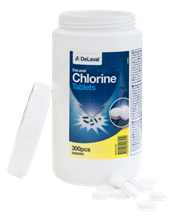How much Automatic Feeding?
With Delpro by DeLaval you can choose on how far you’d want to operate the feeding of concentrate automatically: from 0% to 100%. From keeping part of the work in your own hands to not having to do any work! (Look at the tip from February 2015)
Operating fully automatic is easier, because you’ll never forget to do your job. However, you will miss the finer points regarding the differences in condition and / or fitness from your individual cow.
During the winter, dairy farmers spend relatively more time in their barns and with their cows. So, I think it is time to work less on automatic and having the farmer run a more thorough checkup.
DeLaval advises to let the computer calculate weekly and, depending on the amount of different types of feed, set the deviation, “Max ration threshold” back to 30% – 50%.
The more types of feed available, the higher the percentage can be.
This is due to the fact that the increasing or decreasing amount of levels of concentrate measured in grams are little, but still a lot in terms of percentages.
The lower the percentage, the more influence, the more cows on the attention list
You can adjust this in: Feed => Feed Table Assignments => Feed Table Parameters
Then you have to check the List: “Ration Calculation Log” weekly!
I can imagine you put the percentages higher in the summer than in the winter.







